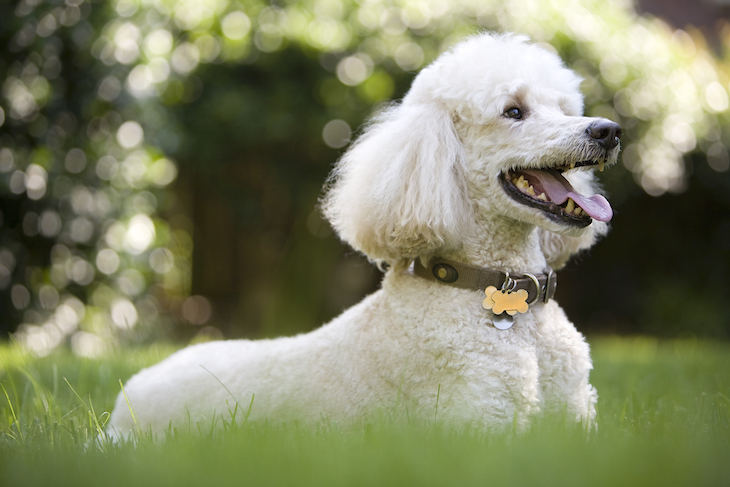We’ve all heard about the varying degrees of canine intelligence, but it’s true that some breeds are more naturally gifted than others. Stanley Coren’s dog intelligence ranking demonstrates this.
Who is Stanley Coren and what is his connection to dog intelligence?
Stanley Coren is a psychology professor and neuropsychological researcher, highly acclaimed for his research and understanding of canine behaviour and the human-canine bond.
In 1994, Professor Coren published his book The Intelligence of Dogs, which became his most famous piece of research. Republished in 2006, the book ranks over 100 different dog breeds according to their intelligence.
It’s important to remember that, just like all children, every dog is unique and intelligence will vary from animal to animal. However, Professor Coren’s research determined that the obedience intelligence in dogs, that is the ability with which they can be trained, does indeed vary.
This variance tends to align with the types of dogs breeders set out to create. For example, working, herding, guarding, hunting, and sporting dogs all require different levels of intelligence and training to carry out their roles.
Understanding dog intelligence: the research method
According to Professor Stanley Coren, 51% of a dog’s intelligence stems from its genes while 49% is based on environmental circumstances.
Included in the 2006 republication of The Intelligence of Dogs are three types of canine intelligence: instinctive, adaptive, and working and obedience. Together, they evaluate the animal’s problem solving capabilities, obedience, memory, social training and powers of observation.
The latter of the three categories, namely working and obedience intelligence, was, and is still today, the most widely discussed when considering canine intelligence. After all, it relates to a dog’s ability to learn from humans, therefore would naturally be used by us as a point of reference.
Below you will find Professor Coren’s dog intelligence ranking from the republished edition of his work in which 131 breeds are ranked.

Dog intelligence: a matter of perspective?
Remember – your dog may sit higher or lower on Professor Coren’s ranking based on their own unique upbringing, environment, and personality. This scale is a guide only. Regardless of what it says, we all know our dogs and their capabilities better than anyone else. And whether our dogs demonstrate intelligence or perhaps a little less intelligence, a healthy and happy pet should always be the primary goal.
After all, a happy animal will show its contentment through daily signs of recognition and attention directed towards its owner. This is, in its own way, a sign of intelligence in being able to communicate what it is that they feel.
Additionally, a dog that has access to the basic elements of care, i.e. food, rest and safety, will influence the way in which the animal behaves. With these basic elements covered, this will likely result in the animal’s willingness to show enthusiasm and affection, even a willingness to “work”. So it’s important to remember that Professor Coren makes an important point when he states that a dog’s intelligence is 49% based on environmental circumstances.
At the end of the day, all dogs are lovable and simply worthy of our love!
Stanley Coren’s dog intelligence ranking
Brightest dogs
Test 1: Understanding of new commands – less than 5 repetitions.
Test 2: Obey first command – 95% of the time or better.
- Border Collie
- Poodle
- German Shepherd
- Golden Retriever
- Doberman Pinscher
- Shetland Sheepdog
- Labrador Retriever
- Papillon
- Rottweiler
- Australian Cattle Dog
Excellent working dogs
Test 1: Understanding of new commands – 5 to 15 repetitions.
Test 2: Obey first command – 85% of the time or better.
- Pembroke Welsh Corgi
- Miniature Schnauzer
- English Springer Spaniel
- Belgian Shepherd Dog (Tervuren)
- Schipperke, Belgian Sheepdog
- Collie, Keeshond
- German Shorthaired Pointer
- Flat-Coated Retriever, English Cocker Spaniel, Standard Schnauzer
- Brittany
- Cocker Spaniel
- Weimaraner
- Belgian Malinois, Bernese Mountain Dog
- Pomeranian
- Irish Water Spaniel
- Vizsla
- Cardigan Welsh Corgi
Above average working dogs
Test 1: Understanding of new commands – 15 to 25 repetitions.
Test 2: Obey first command – 70% of the time or better.
- Chesapeake Bay Retriever, Puli, Yorkshire Terrier
- Giant Schnauzer
- Airedale Terrier, Bouvier des Flandres
- Border Terrier, Briard
- Welsh Springer Spaniel
- Manchester Terrier
- Samoyed
- Field Spaniel, Newfoundland, Australian Terrier, American Staffordshire Terrier, Gordon Setter, Bearded Collie
- Cairn Terrier, Kerry Blue Terrier, Irish Setter
- Norwegian Elkhound
- Affenpinscher, Australian Silky Terrier, Miniature Pinscher, English Setter, Pharaoh Hound, Clumber Spaniel
- Norwich Terrier
- Dalmatian

Average working and obedience intelligence
Test 1: Understanding of new commands – 25 to 40 repetitions.
Test 2: Obey first command – 50% of the time or better.
- Soft-coated Wheaten Terrier, Bedlington Terrier, Fox Terrier (Smooth)
- Curly Coated Retriever, Irish Wolfhound
- Kuvasz, Australian Shepherd
- Saluki, Finnish Spitz, Pointer
- Cavalier King Charles Spaniel, German Wirehaired Pointer, Black and Tan Coonhound, American Water Spaniel
- Siberian Husky, Bichon Frise, King Charles Spaniel
- Tibetan Spaniel, English Foxhound, Otterhound, American Foxhound, Greyhound, Wirehaired Pointing Griffon
- West Highland White Terrier, Scottish Deerhound
- Boxer, Great Dane
- Dachshund, Staffordshire Bull Terrier
- Alaskan Malamute
- Whippet, Chinese Shar-Pei, Wire Fox Terrier
- Rhodesian Ridgeback
- Ibizan Hound, Welsh Terrier, Irish Terrier
- Boston Terrier, Akita Inu
Fair working and obedience intelligence
Test 1: Understanding of new commands – 40 to 80 repetitions.
Test 2: Obey first command – 30% of the time or better.
- Skye Terrier
- Norfolk Terrier, Sealyham Terrier
- Pug
- French Bulldog
- Griffon Bruxellois, Maltese
- Italian Greyhound
- Chinese Crested
- Dandie Dinmont Terrier, Petit Basset Griffon Vendéen, Tibetan Terrier, Japanese Chin, Lakeland Terrier
- Old English Sheepdog
- Great Pyrenees
- Scottish Terrier, Saint Bernard
- Bull Terrier
- Chihuahua
- Lhasa Apso
- Bullmastiff
Lowest degree of working and obedience intelligence
Test 1: Understanding of new commands – 80 to 100 repetitions or more.
Test 2: Obey first command – 25% of the time or worse.

